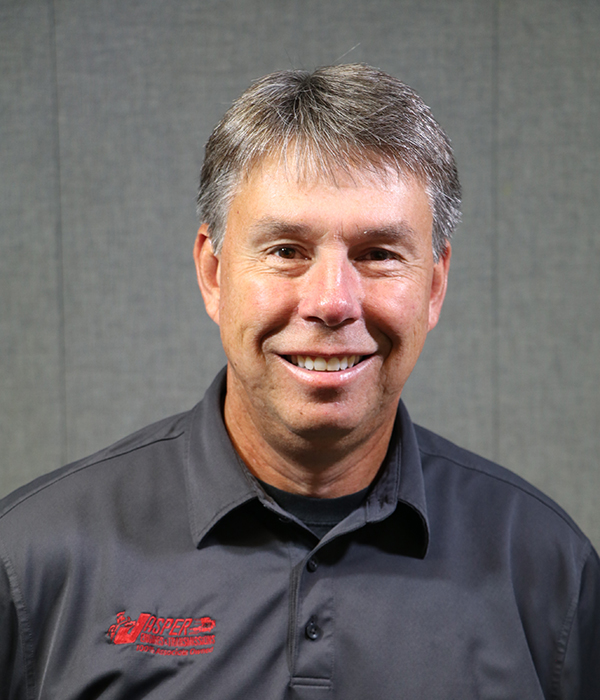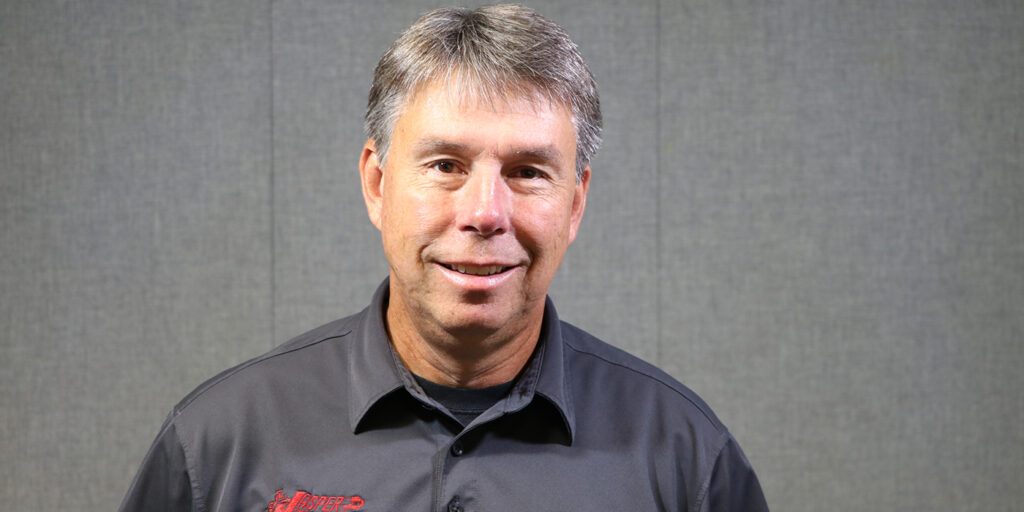In the 76-year history of the Production Engine Remanufacturer’s Association (PERA), there have been 68 different presidents who have helped lead the association in an effort to assist its members in navigating the engine remanufacturing industry and run better businesses. In fact, presidents of PERA used to change out on a yearly basis, until 2007, when a two-year term was put in place.
From 2020-2022, PERA’s 68th president has been Randy Bauer. We recently spoke to Randy about his PERA presidency and what some of the biggest hurdles are facing the engine remanufacturing industry right now.

For those who don’t know, Bauer is no stranger to this industry. He’s a 30-plus-year employee at Jasper Engines & Transmissions, and for the last three years, he has been the vice president of support services for Jasper. Of course, Randy has also been a long-time PERA member. He was elected to serve on the association’s board of directors in recent years and has worked his way up to the president role.
“I became president in September 2020 following Matt McGraw’s departure from the PERA presidency,” Bauer says. “My tenure as president will run through the end of the convention here in September 2022. PERA presidents are chosen from the board of directors, and I was basically asked if I would be interested in going through what we call the ‘chairs’ or the ‘chair process.’
“You come in as the treasurer for two years, and then the next two years you move up to vice president, and then the next two years you move into the presidency. That’s kind of the order of the chairs.”
The president of PERA is tasked with the general oversight and direction of the overall organization. For Bauer, the job was made a little tougher by the COVID-19 pandemic, which also had a big impact on how PERA member businesses have had to function these past couple years. However, he didn’t have to do this work alone.
“I can tell you that the majority of the work is put in through a couple different forms,” Bauer says. “Number one is through Joe Polich, who’s our executive vice president. He’s the backbone and the glue that keeps PERA moving forward and together. We’re also blessed with a lot of volunteers such as our program planning committee and membership committee, as well as webinar presenters, sponsors, and those people who deserve the praise and recognition for making the role of president an easier job.
“Of course, COVID effected PERA in September 2020, when we were supposed to be going to Greenville, SC, but we ended up having to cancel that convention that year, keeping everyone’s safety in mind. As the pandemic slowed down in 2021 and we were heading for St. Louis, MO, we had a lot of decisions to make.
“Has it been long enough? Is it still safe? Safety was our number one concern. Of course, in the back of our minds we were also thinking about whether people would attend or if they were still cautious of the virus and different things. Number two, would we be able to get speakers and tours and things like that set up for the convention from outside people who are a big part of that?”
Thankfully, the PERA convention only had to take a one-year hiatus, which was only the second time in the association’s history that no convention was held (the other time being in 2001). The 2021 St. Louis convention was a good success with a great turnout of PERA membership as well as technical info, tours and activities, and networking.
“I think everybody was willing and ready to get out and get back together and that made the St. Louis convention very successful,” he says. “We’re hoping to see the same thing here as we’re going to Greenville again in 2022. Since everything was pre-booked for the 2020 convention there, they gave us that extra year to come back in 2022.”
Obviously, a big topic of conversation at these conventions center around the internal combustion engine, the components and ways to remanufacture engines at a higher quality and with better efficiency, but the pandemic also created a number of larger, more pressing business challenges that have dominated conversation lately.
“We’re always talking about engines – that’s the primary reason we’re all there,” Bauer says. “However, the pandemic has created havoc for everybody on a couple different fronts. One is on the supply chain side and the logistics that go along with that. The other is on the labor side. That’s something everybody, no matter who they are, struggles with – not just in the engine remanufacturing business – but across the board. Everybody is dealing with supply chain issues and talking about labor shortages.”
For engine remanufacturers, many of them have had to find ways to deal with these new challenges, and in some cases, even look to other suppliers to keep the business humming along.
“One of the things PERA has been very good at is sharing information,” Bauer points out. “A lot of us are so-called competitors, but everybody shares a lot of information that just makes our whole industry stronger.”
On the labor side of things, PERs have had to look at how to attract new talent while also keeping the talent they have. They’ve also been seeing an influx of younger workers from a different generation, which brings additional hurdles to the table.
“In talking with other people, even outside the engine remanufacturing business, I believe they’re all talking about the same things when it comes to supply chain issues and labor shortages,” he says. “If you can get around those or find a way to navigate through those, I think you will be that much better off, no matter how large your business is or what business sector you may be in.
“At Jasper, we’ve also seen those issues. Those have really caused us as an organization to go back and look through how we’ve done business in the past. For example, we may have had one or two suppliers for a certain part and because of supply chain issues or labor shortages on that vendor’s end, it’s challenged us to go back and find quality backup suppliers.
“It’s made us go through and review, from the labor side of it, how we become more efficient at what we’re doing, but also how we work smarter with potentially less people. Like everybody else, we’ve been bitten by that labor shortage and we’re trying to find ways of being able to attract and retain talent.”
While Bauer’s term as PERA president was a quick two years, he’s had a pandemic and some serious business challenges added to the mix. At the end of his presidency, he’s glad to have done his part for an association that represents an industry he’s spent his entire career in.
“I’m not really one to look for accolades, I just hope they remember I did my part to keep the organization and association moving forward through sharing our knowledge and keeping our networking lines open,” Bauer says. “Hopefully, our next presidents down the line will be able to continue to do the same, and we’ll continue to see our membership numbers increase as they have been.”












